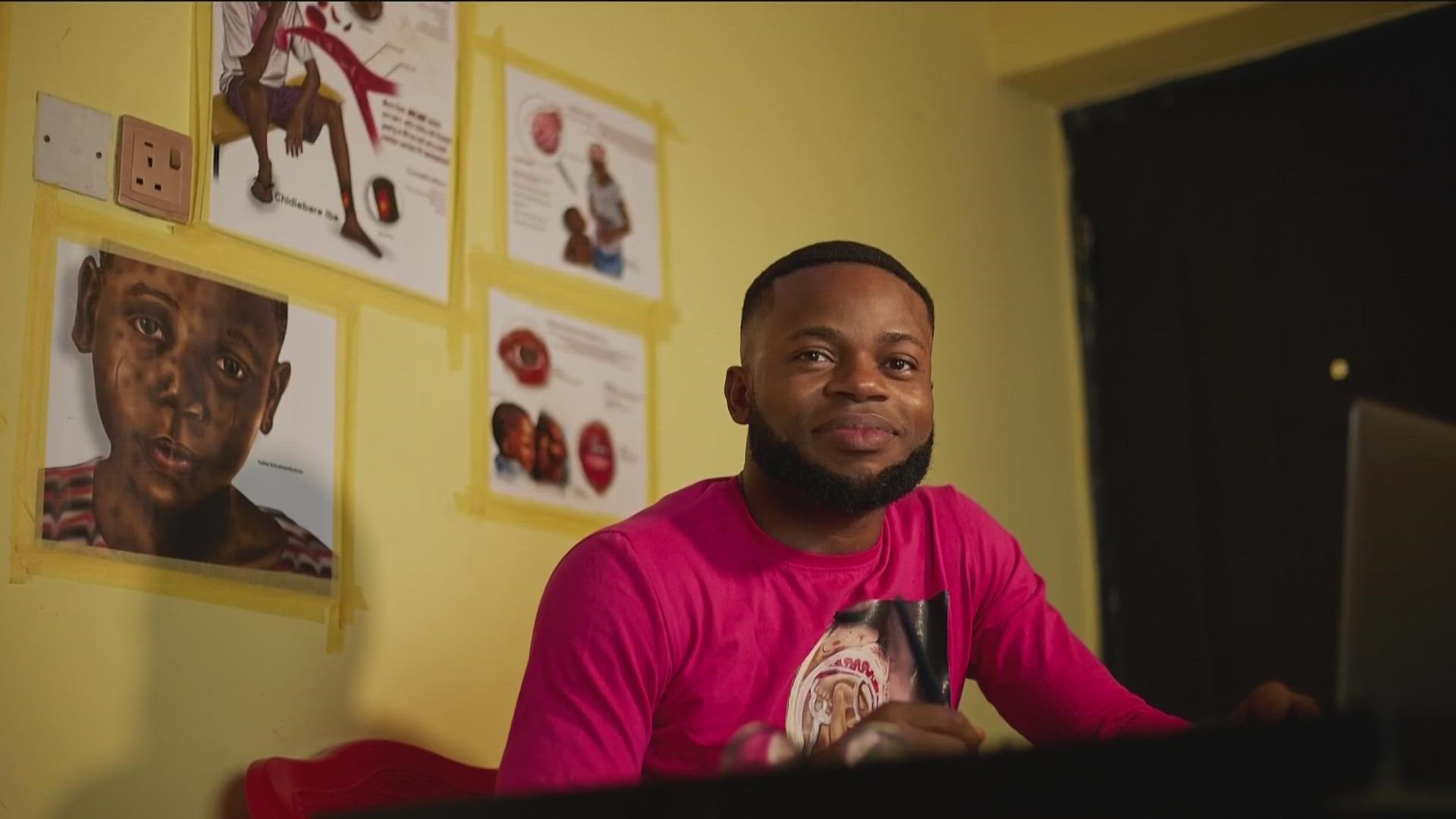SAN DIEGO — The last time you were in the doctor's office, did you see pictures on the wall? One was probably a medical illustration. In most medical illustrations, the skin color is white. Doctors across the world and right here in San Diego say those medical illustrations featuring only white skin is part of a really big problem.
Addressing this problem is one college student who is tackling diversity in healthcare - one drawing at a time. Chidibere Ibe is studying to be a neurosurgeon. His current studies coupled with his background in graphic design are making waves throughout the medical community before he even graduates.
Chidibere Ibe says there was a bit of resistance when he started creating diverse medical illustrations focusing on Black patients.
"People started saying things like, 'why do we need these images? Why do we need diverse representation? What's wrong with all of the images being white?'" Ibe shared.
Ibe's illustrations were shared across the globe in 2021 when he shared his image illustration of a Black fetus. It went viral with hopes of normalizing black illustrations.
Ibe says, there are so many health issues where a lack of representation in illustrations leads to health disparities.
"Black pregnant mothers die more than white pregnant mothers and that is because of a lack of representation and that is because if you are a Black mother, it is assumed you have a higher level of pain tolerance which is a problem in the healthcare industry," explained Ibe.
The maternal death rate among Black women is three times the rate of White women according to a report from the CDC.
Local midwife, Nikki Helms with San Diego Community Birth Center agrees.
"The proof is in the pudding. A lot of Black women have died and are dying in medical systems from something as simple as birth," said Helms.
That can be tough to hear but even tennis champion Serena Williams noted her own childbirth experience saying she was dismissed and ignored by health care providers.
"Birth tends to be pretty simple and straight forward and works fine if you don't mess with it for the most part," continued Helms.
Despite this, the CDC says there’s a slight increase of women dying due to pregnancy or childbirth each year in the United States. The report shows that the nation’s maternal death rate has increased from about 17 deaths per every 100,000 live births in 2018 to 20 deaths per 100,000 live births in 2019 and nearly 24 per 100,000 in 2020.
Ibe says, the disparity is wide reaching and that's why he combined his passion for medicine and graphic design.
"I started reading more about lack of representation and I found out that patients are misdiagnosed because of lack of representation. You would not see any images of sickle cell on a Black patient, yet it affected Black people more. So, I started advocating for Black people through these images and it just evolved from there," he said.
Sumana Mahata is a medical student at The University of California San Diego. Mahata says oftentimes, she personally has had to advocate for patients of color to receive what she believes is equitable healthcare. Sumana says, the medical textbooks are a part of the problem, "When you have all these textbooks that have lighter skinned individuals, that's what people process as normal."
Mahata says instruments like a pulse oximeter, which checks to see if there is enough oxygen in a patient's blood for example, may not work for everyone.
"They shine lights through your fingers just to look at the blood and if you have a darker skin tone, it's harder for that technology to work," Mahata explained.
Debbie and Larry Kline are teachers and artists in residence at UC San Diego who say they joined Ibe in his fight for diverse medical illustrations.
"Things like skin diseases tend to look different when the skin is of a different pigmentation and doctors aren't necessarily attuned to that because they haven't been trained in the full range. Our go-to is choosing a not obviously light skinned figure just because we noticed there was such a lack of those kinds of drawings that existed," said Larry Kline.
Ibe says, it's a fight for equity and to help save lives. "It's not just about creating images that look Black. It's so much more than that. It's about the experience and the story behind every illustration. Every piece of art is a story and every piece of art gets our message out there."
Watch Related: 'Power Mom' | Scripps researcher promotes study aiming to help Black maternal health (Apr 16, 2022)

